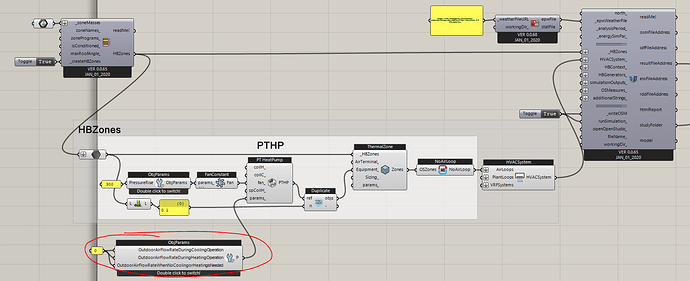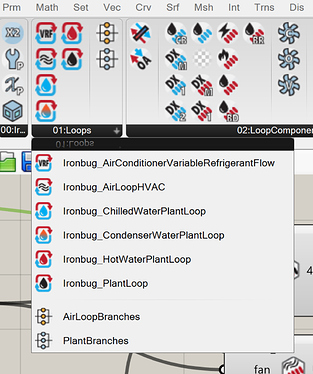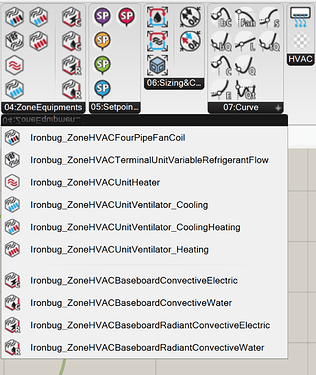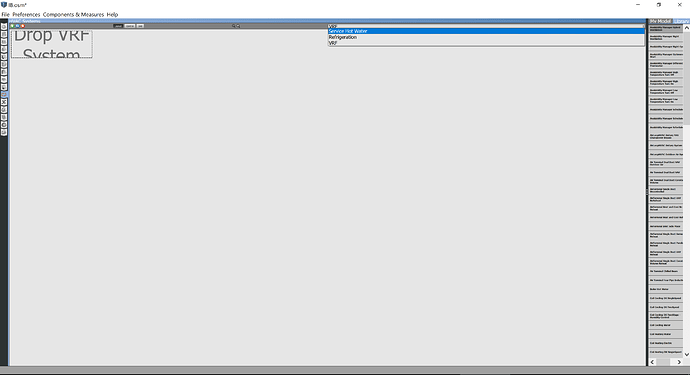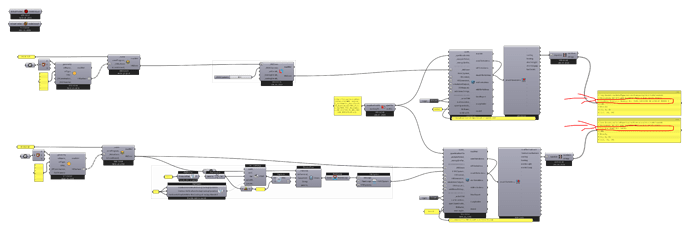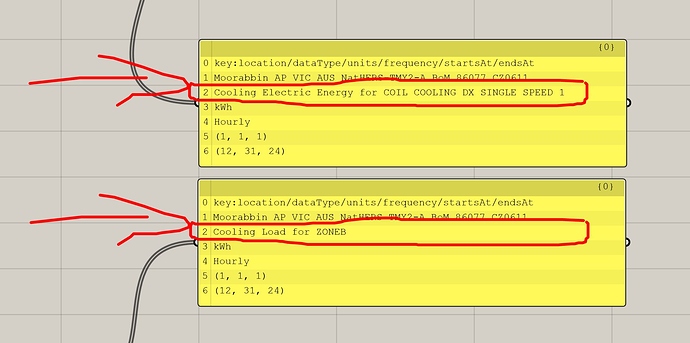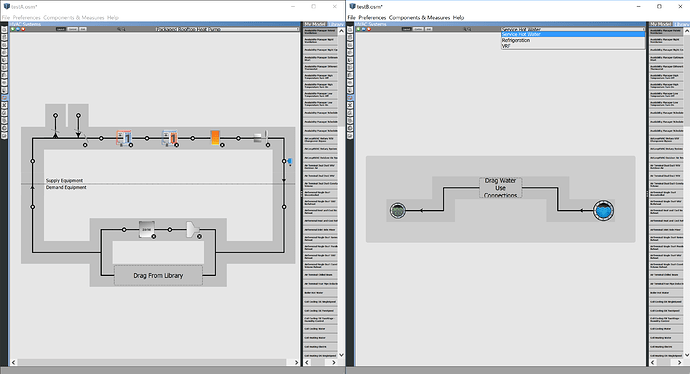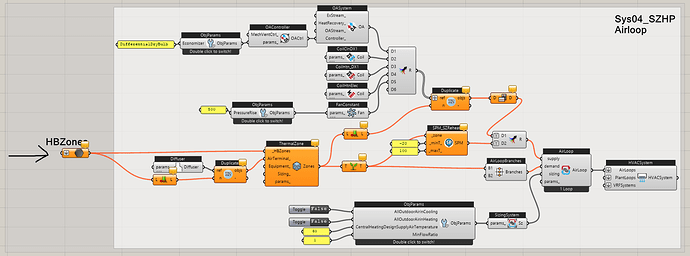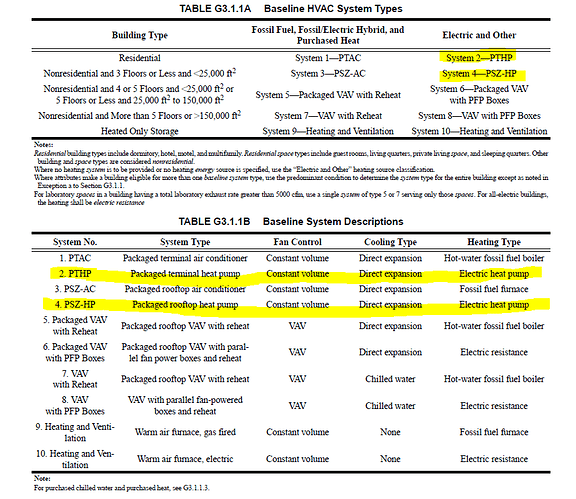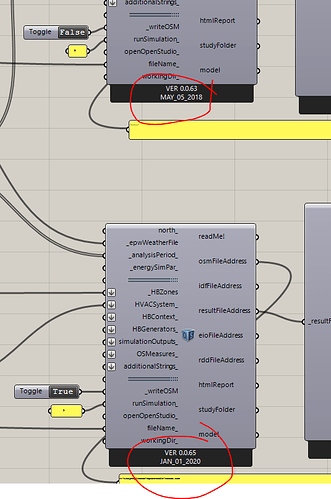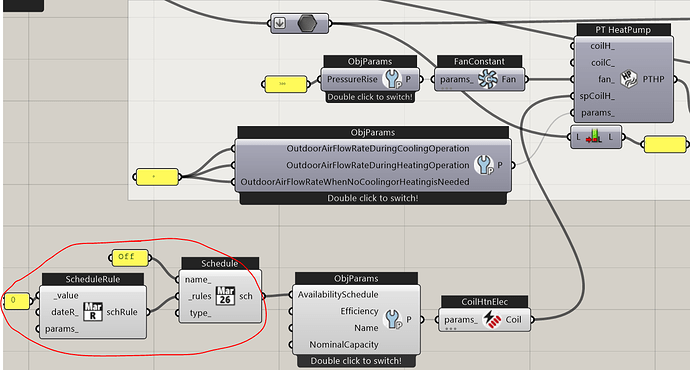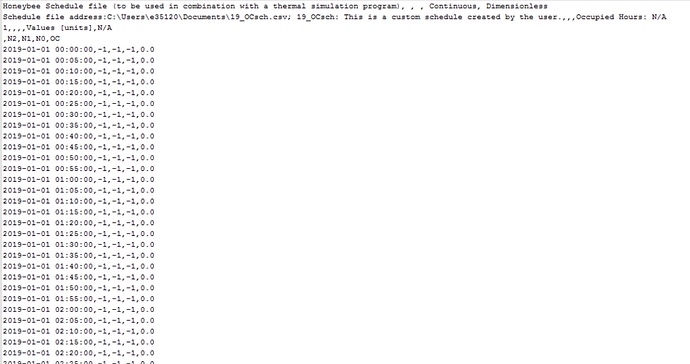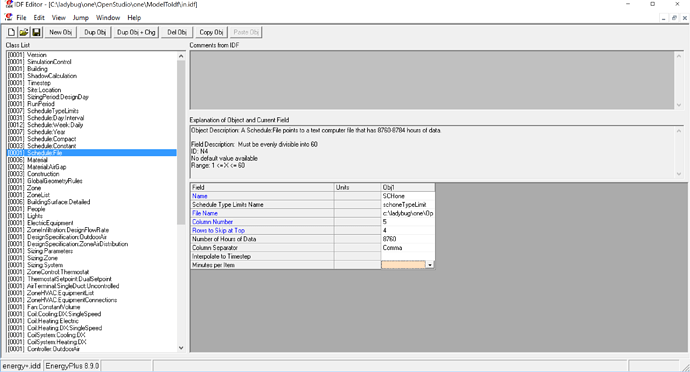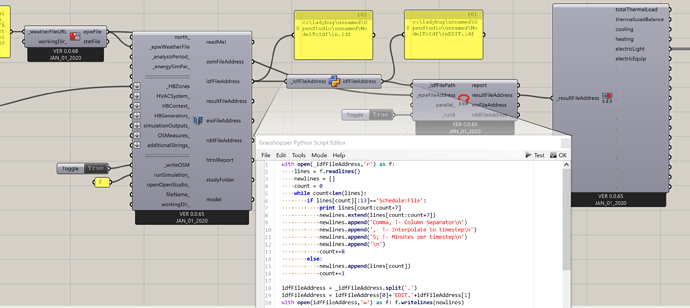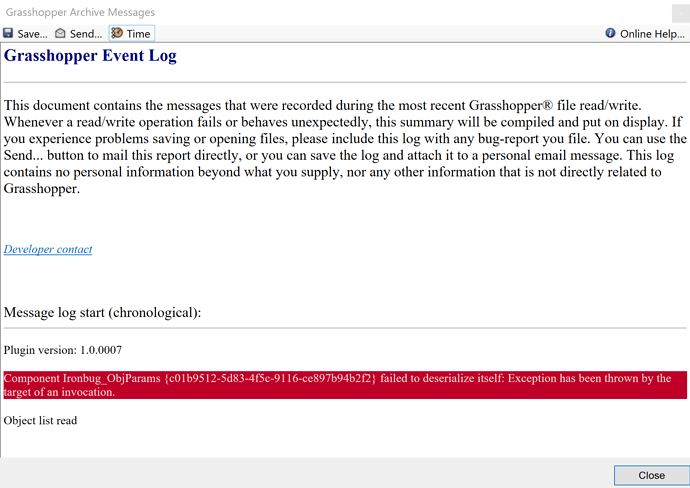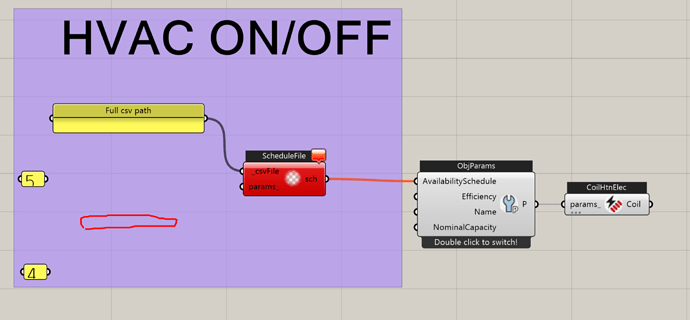I don’t know much about HVAC modelling, so this could be a no-brainer, but I am unsure about how to model a split-system air-conditioner.
I am talking about those very common room air-conditioning units that come with a remote control, enable heating AND cooling, and do not supply fresh air. It seems like all systems in the HVACSystemsList do supply outdoor air? I have tried using PTHP and setting the zone loads “ventilationPerArea” and “ventilationPerPerson” to 0 but this gives me an error message.
If anyone could give me a bit of an insight into this it would be highly appreciated!
@MaxMarschall
Almost all systems in the template list are the ASHRAE baseline systems, all of them have required ventilation.
But you can try to override the outdoor air flow rate:
1 Like
Hi @MingboPeng , I can find neither your “PT Heat Pump” component nor your “No Air Loop” component:
Where would they usually be? Are you able to share your definition?
Also, what is the use of the “Duplicate” component?
Cheers,
Max
Nevermind, I had installed the old version…
I think the old one you installed was the beta version, please ensure deleting the old c:\Ironbug folder completely before installing the new one.
Yes thanks!
I have another question, and sorry for the question overload lately but I’m only just wrapping my head around OpenStudio etc. and your responses have been really helpful.
split system.gh (568.5 KB)
Based on
this discussion, the fact that there are 4 heating outputs when there are only two zones is because the system has DX heating + auxiliary electric heating. My understanding is that standard split system room air-conditioners don’t have the auxiliary electric heating? How do I get rid of that?
I tried checking the OpenStudio file, but strangely when I open it I can’t find the system:
Do you have any idea why this is?
@MingboPeng also…I’ll need to use CSV schedules for availability, have these been implemented yet?
@MingboPeng,
It looks like the system isn’t being recognised. I have here two identical definitions (except for file/zone names). In the first one, I used HB_AssignHVAC; in the second one I used the Ironbug workflow: split system.gh (644.8 KB)
Something must be missing in the Ironbug workflow because it seems to end up with an IdealAirLoads system:
When I open the HB OSM I can see the system; in the IB OSM I can’t:
I’ve been fiddling around with the definitions for so long now I might have become oblivious to a totally obvious mistake; apologies in advance if that’s the case, but any help would be much appreciated.
Cheers,
Max
@MaxMarschall
PTHP (Packaged Terminal Heat Pumps) is a zone level system that you can find under zone tab.
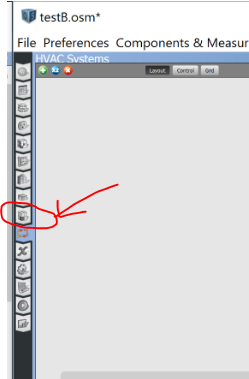
This what system 4- SZHP (Packaged rooftop heat pump) looks like with Ironbug:
PTHP is common for residential whereas SZHP is for small commercial building.
@MingboPeng, thanks for clarifying this.
In my previous message, the issue was that when using the Ironbug workflow, I was getting a “Cooling Load” output instead of “Cooling Electric Energy for COIL COOLING DX SINGLE SPEED”. This implied that the system was being treated as an IdealAirLoads system.
I have now replicated this behaviour and cannot get to the bottom of it. I have here two seemingly IDENTICAL definitions, and yet their outputs are different. No idea what is going on here but that is what was causing me a lot of confusion yesterday, since I was using the definition on the top: split system1.gh (658.6 KB)
Anyway, moving on from this I still have two questions:
-
How can I get rid of the auxiliary electric heating in this system, so that there is only 1 heating output? (I still don’t want any outdoor supply air)
-
Is it possible to use CSV availability schedules? (I had posted the error message further up in this thread)
Again sorry for being so persistant but I don’t know who else to ask - I really appreciate your help!
I think it is because of the version discrepancy. Please try do not to mix-use the honeybee components from different versions.
Instead of looking at how each item being named, I’d compare the real data. To be more specifically, you can also check the raw output report from energplus. In general, this is the safest way to compare apple to apple.
To your questions:
- you can set a availability schedule or capacity to 0 to auxiliary electric heating coil:
- see above. Please let me know if this is enough for your case.
@MingboPeng, I need to use a CSV schedule. The schedule I have is at 5min interval.
Is that possible?
Here is a sample schedule (it’s 3MB i.e. too big to upload); I’ve formatted it in the way that Honeybee does - it’s the 5th column and has a header with 4 lines, adding up to 105124 lines because of the 5min interval.
Hello, If I am not mistaken; scheduling values desire Hourly values. If you were to cull by pattern every 12 values and input than into the Honeybee_Create CVS schedule component’s _values input: the cvs schedule created would work to create a schedule that works with everything
@TrevorFedyna, my plan was simply to edit the IDF file after Honeybee creates it. As far as I can tell, the only edit needed would be to input a value into the “Minutes per Item” parameter?
1 Like
@MaxMarschall does your csv file work in simulation?
If yes, I can send you an updated ironbug with “ScheduleFile” component which has been added since last year, but I have never make it public.
@MaxMarschall Here is the ironbug with this scheduleFile. I attached an example file as well, you can copy this scheduleFile component to your file.
Let me know if this works for you.
Ironbug.20200426.zip (288.6 KB)
20200426_ScheduleFile_Example.gh (13.8 KB)
@MingboPeng once again, thank A LOT.
I will test your definition straight away. In the meantime, I have tested whether my custom, subhourly schedules work in Honeybee in general.
In this example, I created a schedule CSV that oscillates daily between 0 and 1 for the first half of the year, then oscillates every 5min in the second half of the year. I used this as an equipment schedule, and simply edited the IDF using Python before rerunning the simulation:
subhourlyCSVschedule.gh (585.9 KB)
The equipment energy output is just as expected, i.e. daily oscillation in the first half of the year; 50% in the second half:
I assume that the Python part won’t be necessary when using your definition but will check it out now. Thanks for your help.
@MingboPeng was I simply supposed to go to in C:\Ironbug and replace Ironbug.Grasshopper.gha and Ironbug.HVAC.dll with the two files in your zip?
I’m getting an error message and the component in your definition isn’t appearing:
@MaxMarschall did you unlock the zip file (right click => property) before extracting the files to C:\Ironbug?
@MingboPeng, I deleted the two regular files from C:/Ironbug, then moved the zip folder there, unblocked it, extracted it, and moved the new files out of their subfolder into C:/Ironbug. The error is still occurring…
